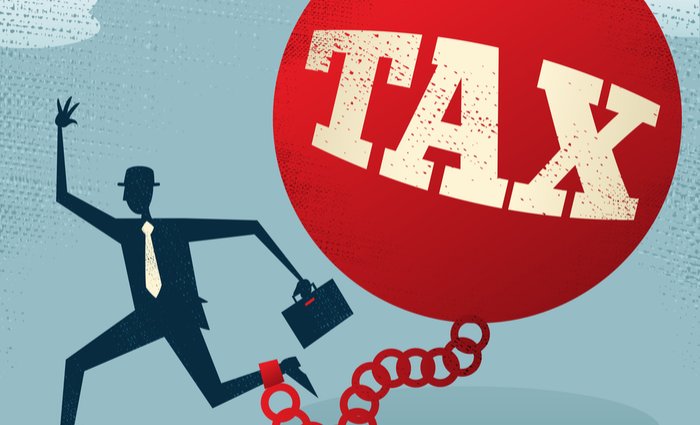
Introduction to Tax Evasion
Since Canada’s tax system is self-reporting, there is potential for abuse in terms of tax evasion. Whether it is using fake identifications to set up businesses and commit GST/HST fraud or fraudulently filing tax returns, many Canadians commit these offences annually. In fact, according to the Canada Revenue Agency (CRA), from April 2012 to March 2017, they convicted over 400 individuals and businesses for tax fraud crimes.
The CRA has a separate investigation division called the Criminal Investigations Program. Its mandate is to investigate cases of tax fraud, tax evasion and other tax-related violations and to refer cases to the Public Prosecution Service of Canada (PPSC) when appropriate. Generally, cases with a high chance of conviction will be the only cases referred to the PPSC.
Generally speaking, tax evasion involves illegally breaching statutory duties in order to evade paying tax. A detailed definition of tax evasion can be found in section 238 and 239 of the Income Tax Act (ITA) and section 327 of the Exercise Tax Act (ETA).
Section 239(1) of the ITA states that a person is guilty of an offence when they have:
(a) Made false or deceptive statements in a return, certificate or statement to the CRA;
(b) Destroyed, altered, mutilated, secreted or disposed records of the taxpayer to evade payment of tax;
(c) Made false entries or omitted records of the taxpayer;
(d) Wilfully evaded or attempted to evade compliance with the ITA; or
(e) Conspired with another to commit an offence described above.
If found guilty of a tax crime, such person is liable on summary conviction to a fine up to 200% of the tax that was to be evaded and/or imprisonment for a term of up to two years. Section 239(2) states that every person who is charged with the offence described above may be prosecuted on indictment, and if convicted, may be imprisoned for a term of up to five years. Section 327(1) and (2) of the ETA is almost identical to section 239(1) and (2) of the ITA.
Section 238(1) states that every person who has failed to file or make tax returns as required is guilty of an offence and is liable on summary conviction to a fine up to $25,000 and/or imprisonment for a term of up to one year. For cases involving egregious tax fraud issues, an accused tax offender may be charged with fraud under section 380 under the Criminal Code. In such cases, the tax offender may face up to 14 years of jail time.
The Burden of Proof for Tax Evasion
To convict a taxpayer for tax evasion, CRA must prove the actus reus of the taxpayer, which is the act of committing the crime, and the mens rea of the taxpayer, which is the intention to commit the offence. These two elements, the guilty act and the guilty mind, must be proven beyond a reasonable doubt. Tax prosecution has a much higher burden than civil tax appeals, which has the standard of balance of probabilities.
The Tax Evasion Actus Reus
In the leading case of R v Klundert (Klundert), the Ontario Court of Appeal stated that the offence in section 239 of the ITA requires proof of an act which evades or attempts to evade payment of taxes actually owed under the ITA. They stated that an act of evading tax is deliberately avoiding something. In this case, the Actus Reus was met because Mr. Klundert had failed to report income and properly calculate tax owing on that income.
The Tax Evasion Mens Rea
In Klundert, the fault component of the offence of tax evasion was found in the word “wilfully” in section 239(1)(d) of the ITA. The Court described the fault component of this section as having two components:
- The accused must know that tax is owing under the ITA; and
- The accused must intend to avoid or intend to attempt to avoid payment of that tax.
The Court stated that an accused intends to avoid, or intends to attempt to avoid, payment of taxes where that is the purpose, or where one knows that the course of conduct will lead to avoiding of tax. In addition, the Court distinguished between legitimate tax planning from dishonest tax evasion. It stated that the latter involves a deliberate attempt to avoid payment of tax. The main difference lies in the state of mind.
The Court summed up the elements of the offence:
- The accused must have done something that avoided or attempted to avoid the payment of tax;
- The accused knew there was tax imposed by the Act; and
- The accused engaged in the conduct to avoid or to attempt to avoid payment of tax
Apply for the Voluntary Disclosures Program to Prevent Prosecution for Tax Evasion
Tax evasion is a serious crime that may result in hefty fines and imprisonment. If the CRA does not know about false statements or failures of tax affairs, a taxpayer can come forward voluntarily through the Voluntary Disclosures Program (VDP). This program can help the taxpayer avoid prosecution and also reduce civil penalties. If you would like help with the Voluntary Disclosures Program, please consider contacting our top Canadian tax law firm for legal assistance. Our top Canadian tax lawyers have submitted hundreds of VDP applications on behalf of Canadian taxpayers over the years and are ready to help.
Toronto Tax Lawyers can Help
Proper representation is crucial in the outcome of a taxpayer’s case. Contact one of our Canadian tax and trial lawyers for experienced representation if you are facing a charge of tax evasion.
